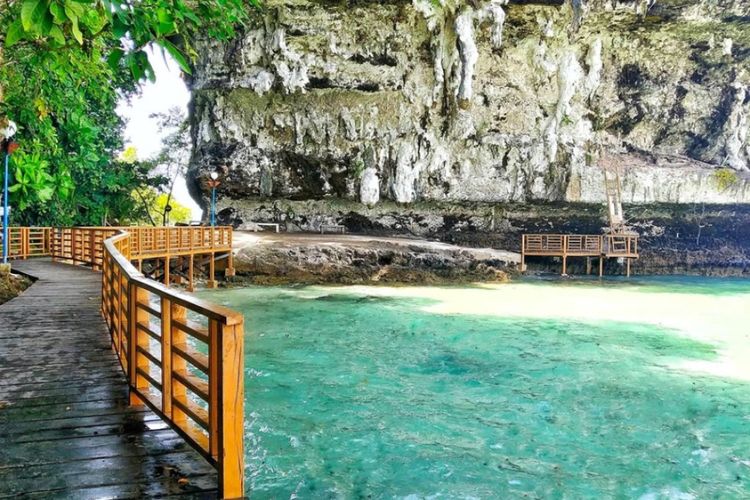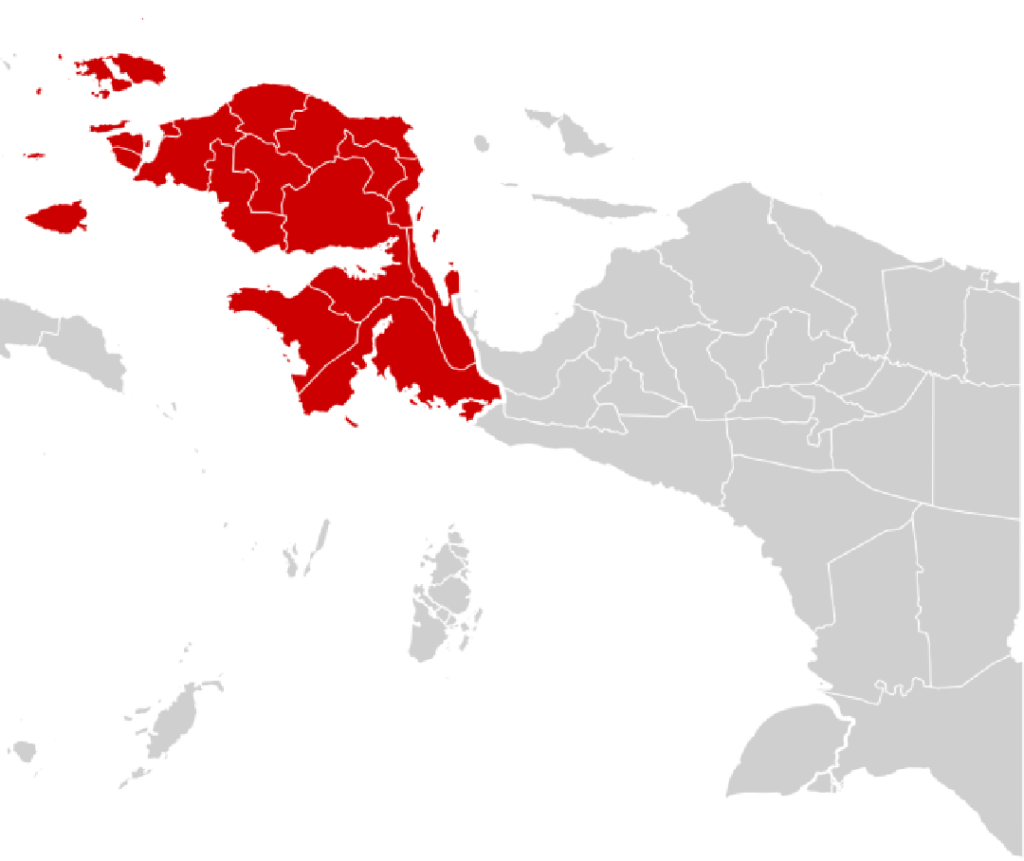When travelers speak of Indonesia’s archipelagic wonders, they often mention Bali’s beaches, Yogyakarta’s temples, or Raja Ampat’s diving havens. Yet far to the east, in the turquoise waters of the Pacific Ocean, lies Biak Numfor, a regency in Papua that has quietly safeguarded its beauty, culture, and history for centuries. Now, the local government is determined to ensure that Biak is no longer just a hidden paradise—it is shaping a bold and strategic roadmap to become one of Indonesia’s most sustainable and attractive tourism destinations.
At the center of this transformation is a comprehensive plan: the Rencana Induk Pengembangan Pariwisata Daerah (RIPPDA) 2025–2030, or Regional Tourism Development Master Plan. For Biak, this is not simply a bureaucratic document—it is a vision of prosperity, identity, and global recognition.
A Master Plan Anchored in Vision
The announcement of the RIPPDA in late 2025 was greeted with optimism across Papua. According to Onny T. Dangeubun, head of Biak’s Tourism Office, the master plan encapsulates the regency’s vision, mission, and measurable strategies to ensure that tourism becomes a driver of inclusive growth.
The plan, designed to stretch over five years, is far-reaching. It involves not only developing new attractions but also strengthening Biak’s identity as a maritime hub, enhancing infrastructure, building human capacity, and engaging both domestic and international partners. Every road paved, every event organized, and every policy passed will be guided by this blueprint.
For the Biak’s Regent, Markus Oktovianus Mansnembra, and Deputy Regent, Jimmy Cartens Rumbarar Kapissa, the plan reflects their commitment to position tourism alongside fisheries as twin pillars of economic development.
Tourism and Fisheries: A Dual Strategy
Biak’s geography makes this dual strategy almost inevitable. With coastlines stretching toward the Pacific and seas rich in biodiversity, the regency cannot separate its future from its waters. Tourism and fisheries are not competitors here—they are complementary forces.
Fishing remains a traditional livelihood, deeply rooted in local culture, while tourism offers new opportunities to showcase the region’s natural wealth. The government envisions a “blue economy” where coral reefs, marine parks, and sustainable fishing practices coexist, offering both livelihood security and unforgettable visitor experiences.
In fact, the Indonesian Ministry of Tourism (Kemenpar) has formally pledged to support Biak’s aspirations, recognizing its potential as a maritime tourism hub with strategic geopolitical significance in the Pacific.
Cultural Diplomacy and Global Events
Perhaps the boldest stroke of Biak’s plan is its ambition to host international cultural festivals, including a landmark collaboration with the Seychelles in 2026.
The symbolism is powerful: an island in the Pacific reaching across oceans to connect with another island nation in the Indian Ocean. Beyond the dance, music, and crafts, such festivals are designed to place Biak on the global cultural map. For local communities, this is more than entertainment—it is validation that their traditions and artistry belong on the world stage.
Four Strategic Priorities for Tourism Growth
The Biak Tourism Office (Dispar Biak) has translated the broad vision into four strategic pillars of innovation:
- Infrastructure and digitalization.
Roads, ports, airports, and digital amenities form the foundation. Tourists need both comfort and connectivity, from smooth journeys to Wi-Fi-enabled stays.
- Branding and Human Resource Development
A destination is not only about landscapes but also about people. Biak is training young Papuans to become guides, entrepreneurs, and cultural ambassadors while shaping a strong “Biak Numfor tourism brand.”
- Sustainability and Green Tourism
With climate change threatening coastal ecosystems, the regency insists that tourism growth must remain environmentally responsible. Eco-lodges, reef protection programs, and waste management initiatives are becoming part of the agenda.
- Investment Facilitation
Biak recognizes that its vision requires more than local effort. International investors are being encouraged to partner in hospitality, marine activities, and cultural projects—with government assurance of clear regulations and community benefits.
Biak as a Maritime Icon
The Ministry of Tourism has singled out Biak as a candidate for becoming an icon of Indonesia’s marine tourism industry. This recognition is not handed out lightly.
Biak boasts a unique blend of assets:
- Marine biodiversity for diving and snorkeling (Padaido Archipelago, Samber Pasi Beach, Iofi Segara Indah/Bosnik, Wanai Wari Beach, and Tanjung Saruri)
- Historic World War II sites, including caves and shipwrecks, attracting global history enthusiasts (Binsari Japanese Cave, Parai Monument, and underwater museum)
- Papuan cultural heritage, from traditional dances to noken weaving (Kampung Tua Wowna, Kampung Sorido, Kampung Mnubabo/Ambroben, Kampung Mandaouw, and Kampung Padwa)
- Stunning landscapes, with lagoons, cliffs, and hidden waterfalls (Telaga Biru Samares, Karmon Waterfall, Perawan Waterfall, and Wafsarak Waterfall)
Such diversity enables Biak to craft thematic tourism packages, blending eco-adventures with cultural immersion and historical reflection.
Community at the Heart of Tourism
Yet the most crucial ingredient of Biak’s strategy is community empowerment. Tourism, as the government insists, should not be imposed from the top down but grown organically from the grassroots.
Local entrepreneurs are being encouraged to establish homestays, souvenir businesses, and cultural workshops. Women’s groups are gaining support to market handicrafts, while youth organizations are trained to guide tours or manage digital promotion.
As Dangeubun explained, the future is not about quantity tourism—masses of visitors overwhelming fragile ecosystems—but about quality tourism that enriches both guests and hosts.
Overcoming Challenges
Biak’s ambitions, however, face undeniable hurdles. Connectivity remains a challenge—flights to Papua are fewer and more expensive compared to western Indonesia. Infrastructure in remote areas lags behind. Moreover, the regency must strike a careful balance between economic opportunity and cultural authenticity, ensuring that tourism does not dilute local traditions or harm natural habitats.
But here lies the opportunity: to build tourism differently. Unlike destinations that developed tourism before sustainability was a global concern, Biak has the advantage of starting its growth with green principles embedded from the outset.
Looking Ahead: Biak’s Pacific Horizon
As Biak moves into the RIPPDA 2025–2030 era, the regency is positioning itself as more than a local attraction. It aspires to be a gateway to the Pacific, a maritime icon of Indonesia, and a model of community-driven sustainable tourism.
The success of this transformation will depend not only on government policies but also on partnerships—with ministries in Jakarta, international investors, NGOs, and most importantly, the people of Biak Numfor themselves—especially to create tens of thousands of new jobs in tourism and related industries; revitalize cultural pride through festivals, art, and performance; create sustainable revenue streams from local communities; and gain global recognition as one of Papua’s premier destinations.
If realized, the vision could rewrite Biak’s place on the map: from a quiet regency with wartime relics and hidden lagoons to a globally recognized destination, celebrated for its resilience, authenticity, and harmony with nature.
Conclusion
Biak Numfor’s story is one of potential meeting preparation. The master plan (RIPPDA 2025–2030) provides the compass; innovation provides the tools; and culture and community provide the soul.
In an era where travelers seek not only beauty but also meaning, Biak offers both. Its seas whisper of history and biodiversity, its villages echo with song and tradition, and its government dares to imagine a future where prosperity flows as freely as the Pacific tides.
For the world’s travelers, the message is clear: Biak is ready to be discovered.


